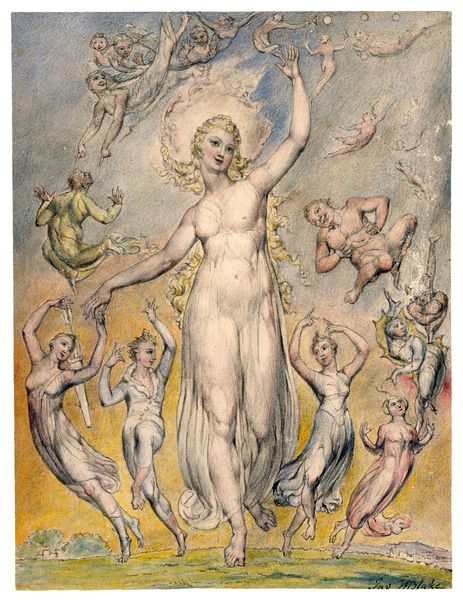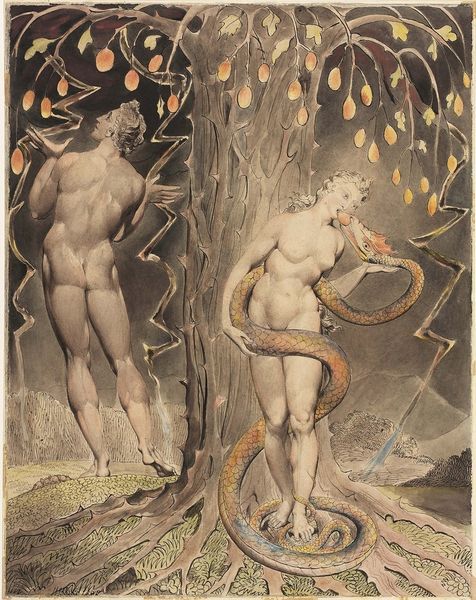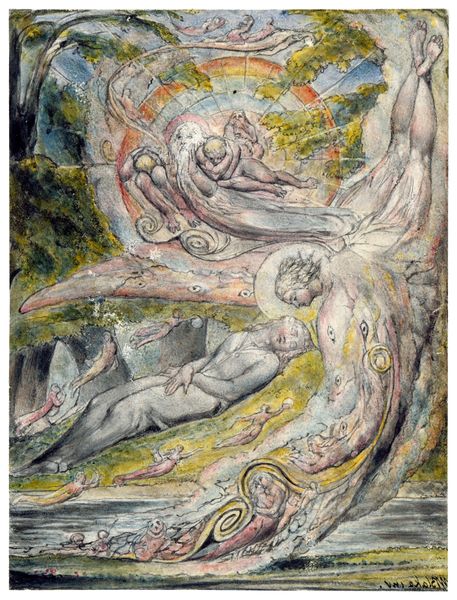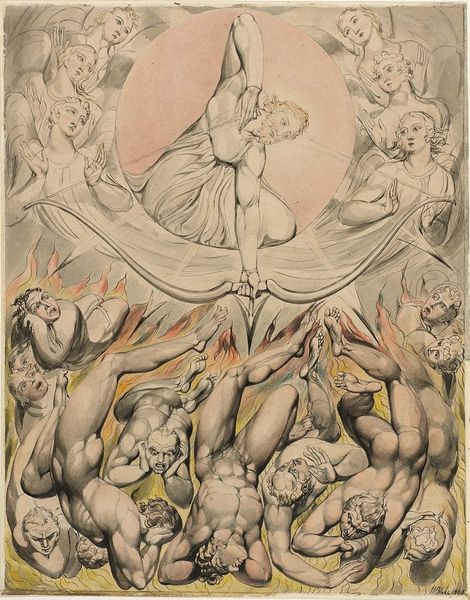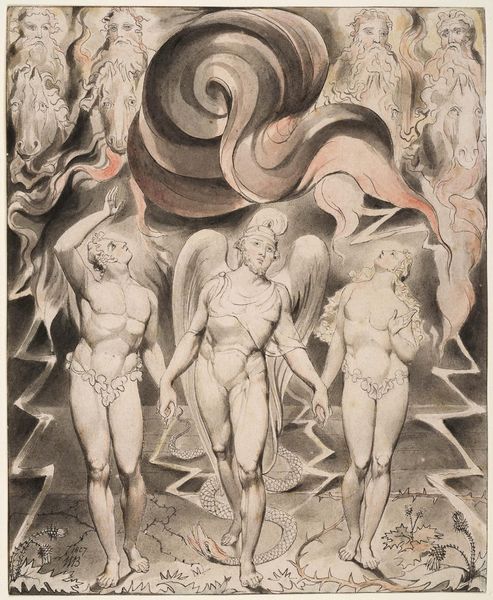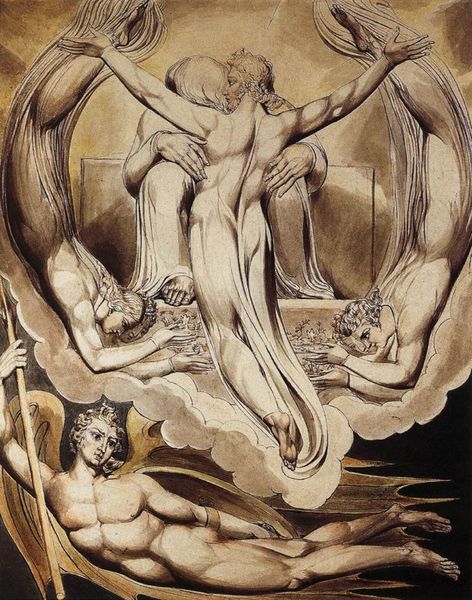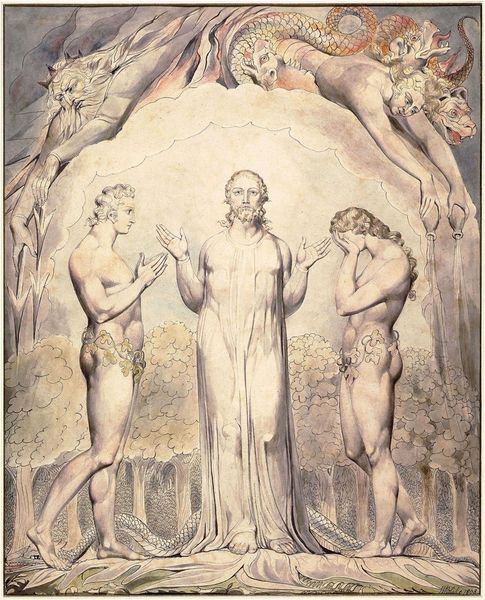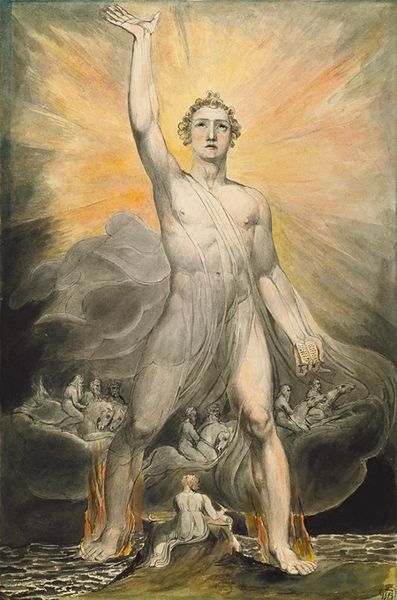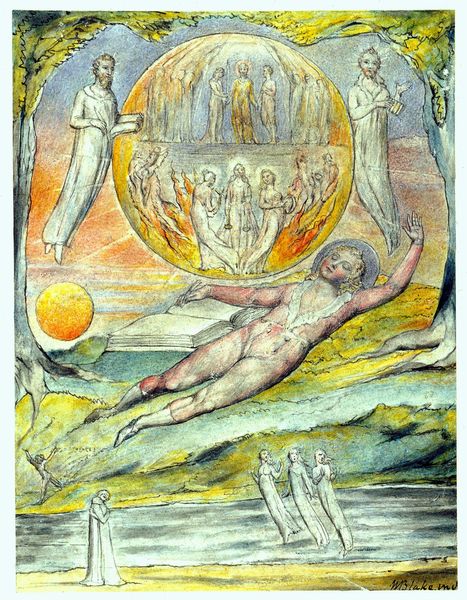
Copyright: Public domain
Editor: Here we have William Blake's "The Sun at His Eastern Gate," made around 1820 using ink, pencil, and watercolor on paper. The sheer scale and dreamlike quality of the figures gives the whole composition an ethereal feel. What do you see in this piece? Curator: This artwork acts as a powerful allegory deeply entrenched in the sociopolitical milieu of Blake's time. It critiques Enlightenment rationalism, instead advocating for the power of imagination and spiritual experience. Think about the radiant figure – and consider who it could represent. Editor: I suppose he’s a representation of the sun itself, but with this very human form… it’s almost confrontational. Curator: Exactly. Now consider: what is the significance of portraying the sun— traditionally a symbol of enlightenment—as a vulnerable human? Think about Blake’s radical politics, and how he challenged traditional hierarchies through works imbued with his own mythology. How does that impact the relationship between the figures in the landscape and the dominating central character? Editor: I see what you mean. It's almost like Blake is turning the established order on its head, empowering the human, spiritual realm, and questioning what Enlightenment truly means, and for whom. It challenges this single 'source of light'. Curator: Precisely! Blake’s work invites us to reflect on how societal narratives can oppress and how embracing imagination can unlock radical social and spiritual transformation. What's one thing that resonates most with you after our talk? Editor: I now look at it from a socio-political perspective, in light of the societal issues and dominant narratives in Blake's England. It helps see how groundbreaking Blake's thinking really was. Thanks!
Comments
No comments
Be the first to comment and join the conversation on the ultimate creative platform.

